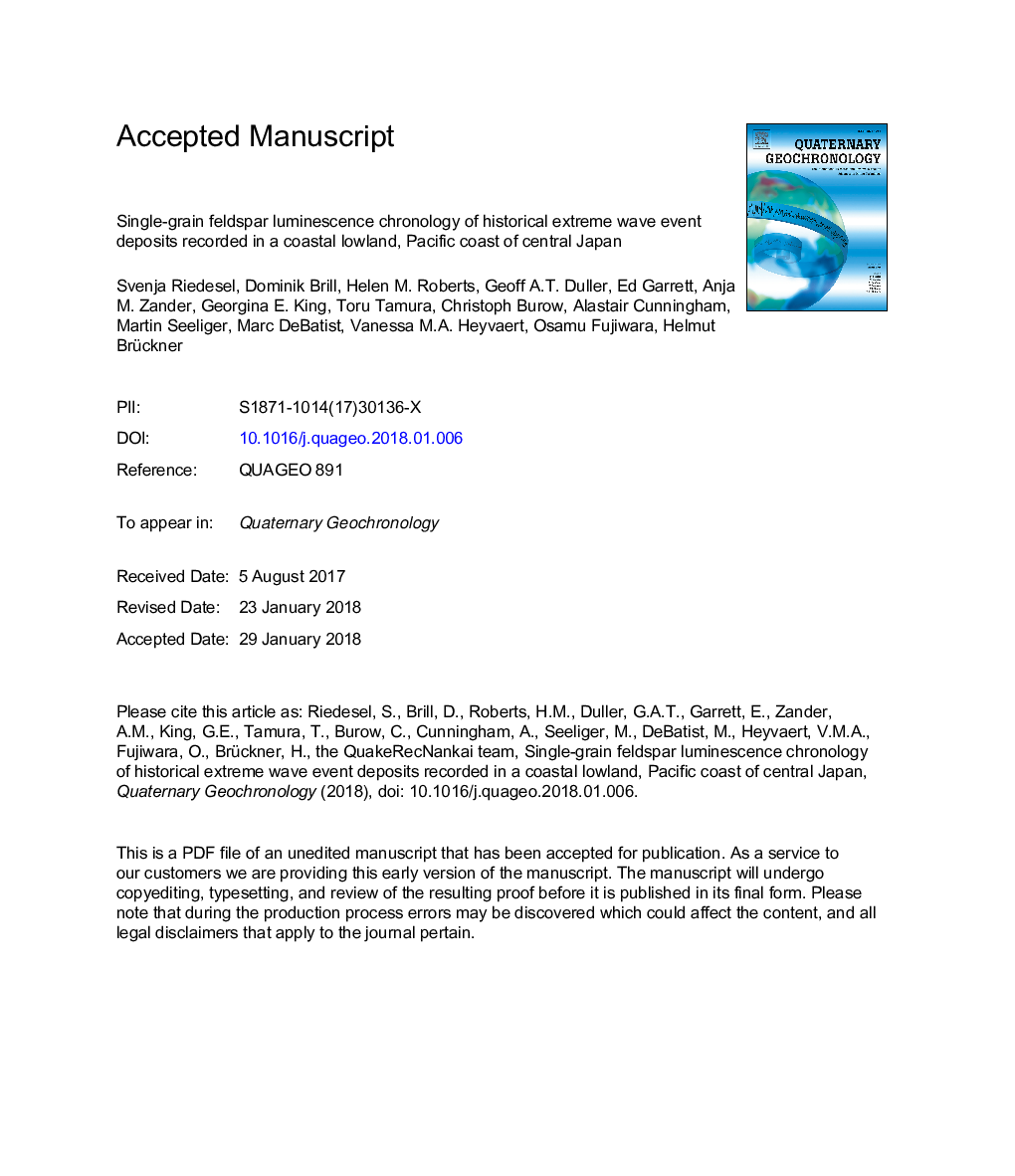| Article ID | Journal | Published Year | Pages | File Type |
|---|---|---|---|---|
| 8912818 | Quaternary Geochronology | 2018 | 58 Pages |
Abstract
The Shirasuka lowlands, located on the Enshu-nada coast of central Japan, record evidence for numerous extreme wave events. Here we test the applicability of using the luminescence signal from feldspars to date these young (<1000 a) extreme wave event deposits. The signal used for dating is the IRSL signal (measured at 50â¯Â°C) as part of a post-IR IRSL130 procedure. We demonstrate that this IRSL50 (pre-IR130) signal results in reliable ages when corrected for fading, and the post-IR IRSL130 stimulation functions as an optical wash for both the natural/regenerated luminescence signal (Lx) and the test dose signal (Tx), lowering the recuperation and removing any remaining charge from previous steps in the protocol. The single grain IRSL50 (pre-IR130) ages generated cover the historical record of the past 800 years and correlate well with past earthquakes and tsunamis in 1361 CE, 1498 CE and 1605 CE. Another identified tsunami deposit may correlate with the 1707 CE earthquake and tsunami. A slope failure deposit, probably caused by the earthquake in 1944 CE, is also identified. This study demonstrates that accurate ages can be determined for the young, extreme wave events at this site using the luminescence signal from feldspars.
Keywords
Related Topics
Physical Sciences and Engineering
Earth and Planetary Sciences
Geochemistry and Petrology
Authors
Svenja Riedesel, Dominik Brill, Helen M. Roberts, Geoff A.T. Duller, Ed Garrett, Anja M. Zander, Georgina E. King, Toru Tamura, Christoph Burow, Alastair Cunningham, Martin Seeliger, Marc De Batist, Vanessa M.A. Heyvaert, Osamu Fujiwara,
